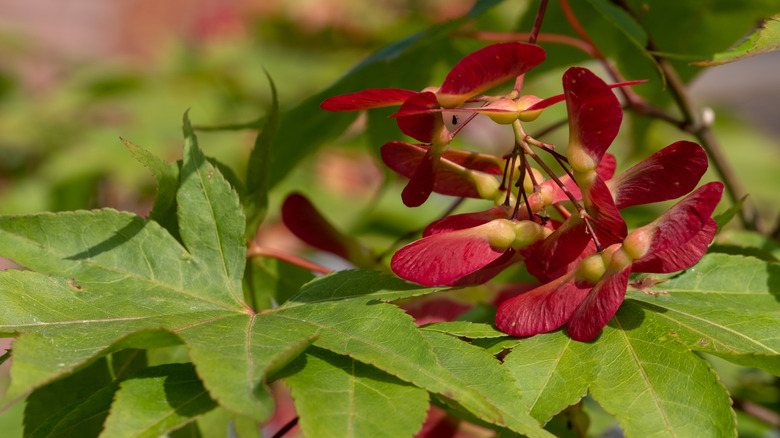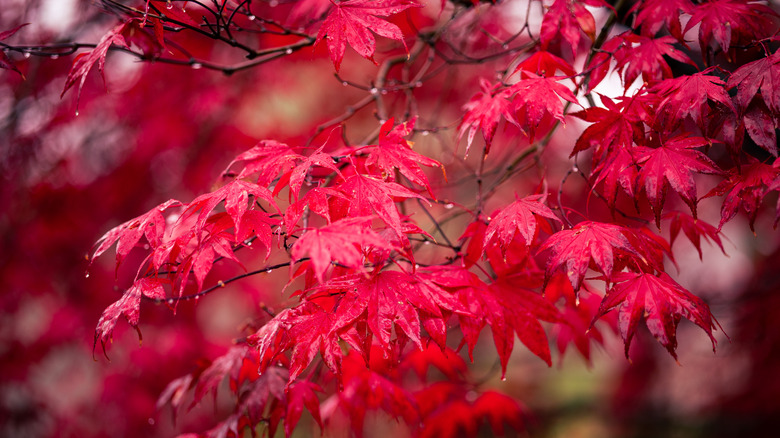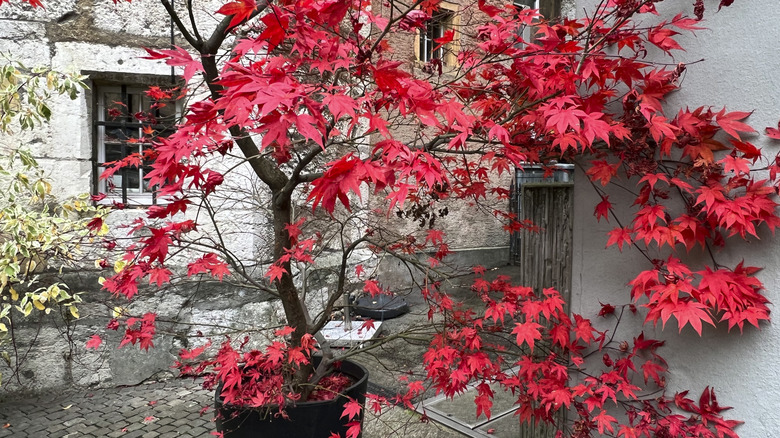The Fast-Growing Japanese Maple Tree That'll Look Gorgeous In Your Yard For Years
Many home landscapers love the look of Japanese maple trees (Acer palmatum) for their garden or yard, and it's easy to see why. Native to Japan, Korea, and other parts of Asia, these perennial cultivars are known for their longevity and eye-catching leaves in various shades of yellow, bronze, purple, or red. They grow fast and do well in USDA Hardiness Zones 5 through 8, making them suitable for many regions throughout the United States. As a bonus, they aren't particularly appealing to deer, which could make them easier to maintain without fighting the local wildlife.
Still not sold? The Osakazuki Japanese maple (Acer palmatum 'Osakazuki') is one particularly stunning variation that you can plant on your property and enjoy for years to come. It's notable for its crimson red, cup-shaped leaves, which start off as green or gold-tinged in the spring, evolve all summer, and reach peak saturation in the fall. (Fun fact: In Japanese, "Osakazuki" means leaf that is shaped like a wine cup.) As such, it's a good pick if you're looking to make the most of your autumn garden. Osakazuki Japanese maple trees can tolerate more sun than other variations of this popular tree, too.
How to plant and care for Osakazuki Japanese maple trees
Planting an Osakazuki Japanese maple? Aim for the fall so its root system has some time to grow before winter sets in. If you're planting from seed, this cultivar will take some time to grow. However, you can expedite the process by replanting an existing tree from your local nursery or garden center. Ensure that its soil is moist and well-drained, and choose a spot where your tree has some protection from wind. Also, make sure that it gets enough light (but not too much!). In northern parts of the country, Osakazuki Japanese maples can tolerant full sun, but they fare best in partial shade conditions in the south — overexposure to harsh sunlight can scorch this plant's foliage. You can grow it directly in your garden or in an appropriately sized container.
Once established, and when planted in the right conditions, an Osakazuki Japanese maple doesn't require a ton of maintenance. It grows rapidly when it's new but, over time, slows to a more gradual pace. Keep the soil consistently moist without extremes of wet or dry conditions. Prune your tree lightly, if it all, and only once its leaves are dying out in late fall or mid winter. To aid its growth year after year, fertilize your Osakazuki Japanese maple again in the spring.
Other considerations to keep in mind when planting Osakazuki Japanese maples
As gorgeous as Osakazuki Japanese maples are, there are some common issues you should know about before planting them. Though they're naturally drought-resistant and relatively low-maintenance, these trees are quite slender, which makes them susceptible to structural damage from wind or heavy rain. They also don't fare well with early winter or late-spring frost — these conditions can damage their branches and leaves. If you live in a region where hurricanes, hail storms, or erratic weather patterns are common, you may want to plant a hardier, sturdier tree. Additionally, Osakazuki Japanese maple can be afflicted by pests, including aphids, borers, and mites.
Equally important to note: These trees aren't native to the United States. Though they are not considered to be an invasive plant you should never grow, they're not doing anything to support your local ecosystem, either. For a native alternative to Osakazuki Japanese maples, try big-toothed maple (Acer saccharum subspc. grandidentatum). These stunning trees from the same plant family offer similarly show-stopping fall foliage and can withstand the elements a bit more. You can also look into American smoketree (Cotinus obovatus), a smaller tree that will look gorgeous in your garden or yard come fall. It can tolerate full sun to partial shade.


